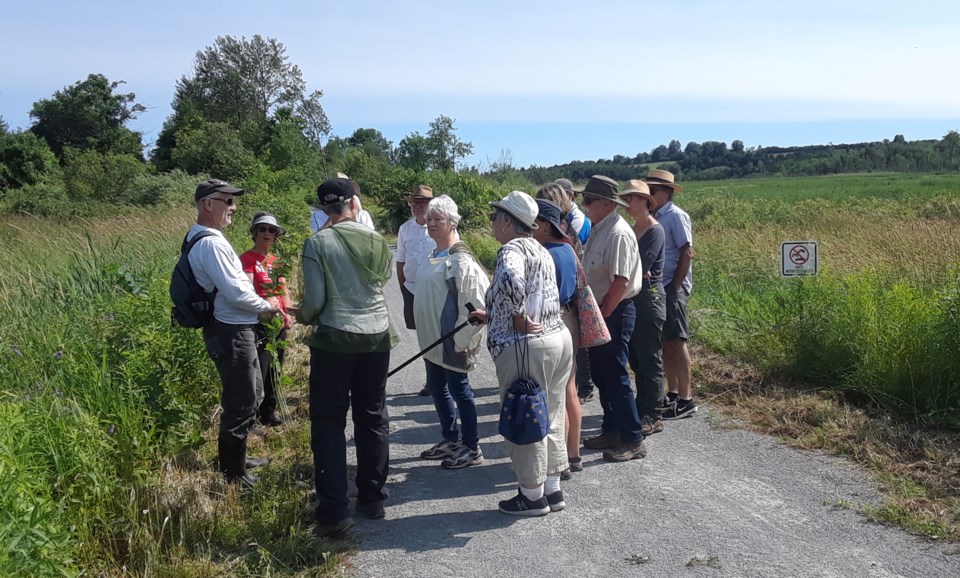NEWS RELEASE
CARDEN FIELD NATURALISTS
*************************
On Nov. 9 at the Carden Field Naturalists meeting held at the recreation centre on Lake Dalrymple Road, guest speaker Richard Dickinson, co-owner of the Wild Garden in Cannington, gave a slide/talk presentation titled, “Climate Change and the Forests of the Future.”
Dickinson has 35 years’ experience in field biology and environmental consulting. He has taught plant taxonomy and the effects of plants on human civilization, and he has co-authored nine books on plants and The ROM Field Guide to Wildflowers of Ontario.
Dickinson started off acknowledging that there are different scientific models of climate change, but that one thing they all agree on is that it has begun — the time to act is now. Since the beginning of agriculture there has been warming but the last 150 years have seen greater warming than in the last 10,000 years. The projected world map in 2100 has an 85-metre rise in oceans, which will mean that 226 million people who live fove feet above sea level will be underwater. Norway, Holland, the Phillipines and some of the world’s largest cities will be deluged and uninhabitable: Tokyo, Mumbai, New York, Los Angeles, amongst others.
How will this affect the natural environment, forests, and agriculture in this area? In Ontario, the farthest north will warm the most. One-third of Canada has already changed. Zones 3 and 4, our prime growing area, will increase and move north.
Already in Zones 8, 9, around Leamington, for instance, one can see more greenhouses in operation due to warming, and maple syrup from sugar maples already has a shorter season. Permafrost is melting, creating sinkholes. Permafrost holds four times more carbon and wide-scale melting will throw modelling off. Forests will move north into what was permafrost with an average of six degrees of northward shift. With a browning southern edge and greening farther north, paper birch will be totally absent in Ontario, Arctic willow will be extinct, Hudson Bay Lowland taiga will be underwater, and trees already struggling like Dutch elm will not survive. All wildlife that live in these forests and waters, where can they go? How will they live?
Other changes that will be coming involve some problem plants taking hold: Hydrilla, a water weed and water chestnut, will have to be removed, and kudzu, 'the vine that swallowed the South,' will invade.
What should we be planting now knowing of these coming climate changes? Dickinson suggests the following: Tulip tree, sweetgum, flowering dogwood, Ohio buckeye, sassafrass. He urges us to spread the word. There can be no more delay.
*************************
